Kingdom of Seinis in Greater Huraedon
The Kingdom of Seinis in Greater Huraedon is the largest, wealthiest, and most populous of the major geopolitical states in the Empire of Juraedon. In terms of etymology, the name Seinis is a relatively new addition to the general vocabulary. It was coined after a pouring over the histories of Greater Huraedon, and the name Seinis was uncovered as being an ancient name used by ancestors of the Trouveres for this vast region. The Kingdom of Seinis's history is long, its geography is as varied as its people, and its importance in the Empire cannot be understated. Indeed, to say that the Kingdom of Seinis is the heart of the Empire would not be to speak too far from the truth.
Life began in the East; art began in Seinis.
Structure
Having been organised under the Empire of Juraedon and subordinated to the Nelqorana style of federal government, the basic structure of the Kingdom of Seinis in Greater Huraedon goes as such:
- Kingdom Proper
- Supremme inu Departmentes
- Mici inu Departmentes
There are many exceptions to this organizational list, often dictated by history or culture. Currently, the balance of power in the Kingdom of Seinis has shifted into the hands of King Robert VII. The position of King in Seinis is to be, at least nominally but many times practically, an absolute monarch. The Kingdom of Seinis is a devolutionised state, but its sheer size could lead to internal collapse as internal parties rebel and vie to forcibly loosen the control of the Crown. It has only been the wise guidance of the current royal line that has led to the prosperity of Seinis today; rejuvenating the country after the century-long Blood Wars. But during a time of succession, all this effort could easily and quickly fall apart.
The system of organization and government in the Kingdom of Seinis is a haphazard mix between a homage and a bureaucratic system. While the Departments proper are managed in a pyramidical structure with a regional governor at the top answering to the King and his court, these regional governors are often the landed nobility and the method through which the landed nobility organize their land is a system based on homage.
Homage
What is meant by this? What this article means by homage is the system of prestige and obligation and the granting of titles through which the nobility at the top manage their subjects and subordinates. These titles can be passed down the generations, creating new landed nobility who can attain more land and prestige for themselves and give out these titles to their subordinates in turn. The serfs who work the land are left behind and are not allowed onto this political battlefield.
This system of homage is inherently volatile. Lands may be cut up in various different ways to suit the wills of sons so that civil war doesn't erupt. Snubs will be taken too seriously. Warfare is abrupt and occurs often. Lands are ravaged as armies pass by, and beneath it all are the peasants who slave away to no gain of their own. This antiquated system from the times of Hod is still in full force in many places in the world, but one would expect the Kingdom of Seinis to have done better. Beneath the exterior of the Departmentes is a system that can explode at any moment and send the whole kingdom toppling down in fire.
Perhaps most aggravating is that this system of homage is not standardized and that it may take many shapes and forms across the vast Kingdom of Seinis, creating difficulties in reeling in the nobility, as one doesn't know how to traverse the local political landscape.
A Source of Conflict
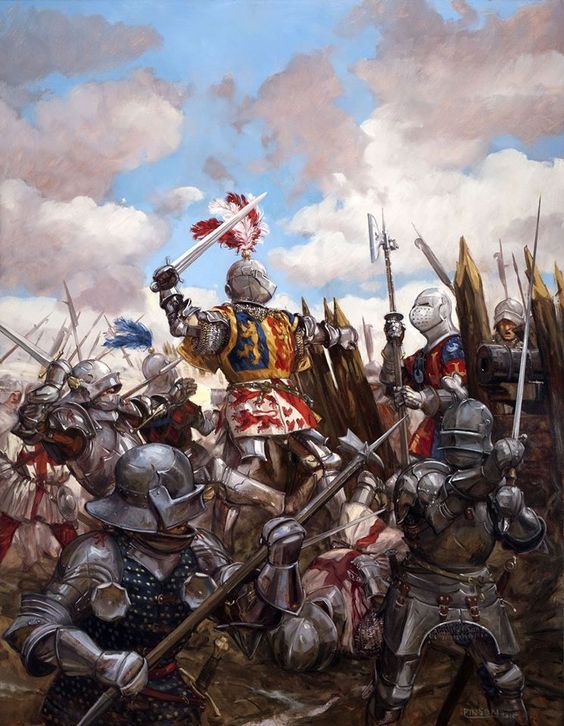
The differing systems have caused many minor, and some major, conflicts between King and the landed nobility of Seinis. These conflicts revolve around the centralization of power. The nobility see, correctly, that the system of the Departmentes will restrict their powers, and that the King is drawing all political importance unto his office. The nobility see the King's great palaces with their splendid and opulent gardens. They see themselves having fine parties at the King's gatherings, brought together, far away from their lands and wealth and seats of power, collected under the wing of the King like a mother hen gathers her chicks. The nobility feel it in their bones: the King means to render their offices nominal.
It is a sad thing that the ensuing revolt against the centralization of power has been monstrous and, sometimes, bloody. Headed by the house of the Empress, the House of Cour da Lione, the nobles of the Kingdom of Seinis vie for greater and greater independent powers. It is only with great skill that the King continues to advance his will. The nobles are brought further into the Departmentes system; they are kicking and screaming all the way. But Robert VII the Strong is old, and his son is half the man he is. And in times of succession the Royal House will be weak.
Shall Seinis erupt? Or will it reach new heights of glory?
List of Departments
The Major Departments and their corresponding Minor Departments are listed below. It is important to note that provincial borders change and ebb all the time due to infighting between nobles and the exchange of land owned. Accompanying these exchanges of land are name changes, sometimes. The article lists the current provincial names in 1090 Year of Huraedon. All names are from the royal registry of departmental names.
Great Plains- Pern State
- Carolin
- Peregrine
- Mayland
- Birae
- Abjlore
- Misty Shire
- Tebrahall
- Corn State
- Cend
- Umbar
- Sjaezon
- Tønbar
- Agphatir
- Reindeer
- Agphone
- Liri Scora
- Far Land
- Summerland
- Harpden
- Manscoln
- Merrishire
- Ajilano
- Conlara
- Bafan
- Milani
- Mery
- Chole
- Loren
- Decy
- Saintes
- North-west Province
- South-west Province
The Courts of Seinis
The judicial bodies within the Kingdom of Seinis have powers according to the region/department they are assigned to. The Minor Courts serve the Minor Departments and deal with matters too difficult for the local sheriff or local noble but too small to warrant the authority of the Major Courts.
The Major Courts serve the Major Departments and will deal with matters mostly regarding property laws, criminal laws, and the macro-management of the departmental realm and the overseeing of the departmental system within that specific department.
The Royal Courts is headed by the King himself, and is, in many ways, less important than the Major Courts. A Royal Court will deal with especially dangerous or infamous subjects, matters regarding the King's pardon, existential issues regarding the country and the emergency administration and the following emergency property laws, and, in certain cases, fighting with the Imperial courts in the interests of the Kingdom of Seinis.
History
The Kingdom of Seinis in Greater Huraedon as we know it today, ruled under the House of Dufron, was a geopolitical entity created by the Emperor of Juraedon at the end of the Blood Wars. Any nobility who helped the Emperor with his conquests were granted prestigious lands and titles. The most valiant of these noble Houses was the House of Dufron, which came from the country of Aemiride and they were granted kingship over the region of Greater Huraedon. Naming the land 'Seinis', the House of Dufron's long work has made the Kingdom of Seinis into a powerful entity, and the kingdom is quickly surpassing the heights of its antebellum glory.
The Initial Years
The entire region and its nobility were shaken. For so long, Greater Huraedon had been the center of the known world, and now it was subjugated by a city-state on the edge of it. But Philip the Fair of House Dufron was quick to act. With the nobility in shambles due to the Blood Wars, he set about restructuring the Kingdom of Seinis. With a host of Wizards from the Empire at his side, he set about restoring the kingdom. The first of his acts was the creation of the Departmentes system. Convincing the landed nobility with gifts or, if they were reluctant, strongarming them with the cadre of Wizards he controlled, King Philip began to integrate, transform, and dissolve the old systems of homage that had so long dominated Greater Huraedon.
Coiciding with this monumental structural project, King Philip moved his capital from Southeastern Seinis to the small hamlet of Lille. Lille had once been the greatest city in Greater Huraedon, but after Hod the Great's kingdom dissolved, the city shrank. At the time of King Philip, Lille was a summer getaway for the royal family. Philip began construction projects, and he groomed his son, Aldonse, to become the next king.
Alas, tragedy struck and Philip, before he was able to fully dissolve the old system of homage in place of the Departmentes, fell ill with smallpox. His Wizards, so long his advisors and the right arm of his military, were forbidden to meet with him and possibly cure him by the Prince Aldonse. The king had already become delirious, and could not revoke his son's malicious command. The King died soon thereafter, and Aldonse was crowned King of Seinis.
At this point, the nobility had regained some of their power and political acumen, and during the time of succession were able to ensure that the old systems would stay in place. What occurred was a bisected kingdom. On the one hand, Seinis was managed by the Departmentes, on the other, it was managed by the ancient homage. So then, our current conflict between King and Noble stem from this time.
The Years Thereafter
While Aldonse was a capable king, he was not blessed with the organizational genius of his father. He finished the construction of the city of Lille, and the effort nearly bankrupted the royal house. But at last the wondrous seat of the King's of Seinis was finished. It was only second in monumentality to the City of Juraedon. But Aldonse was a cunning steward. He could find funds from places no one else could. During his rule, the Kingdom of Seinis began to settle into rote action and deeds. The only notable change was in the station of the knight in Greater Huraedon, which had slowly become militarized, and the subjugation of the barbarians in the Western Vale of the Sein, which had long been a nuisance to the kingdom. Though many events happened after the rule of Aldonse, premier among them the return of the Patriarch of Uendale from the city Ioulle back to the ancient city of Uendale, this article will not entreat on the Kingdom of Seinis's long history. If one wishes to read more about this country's history, the Seven Ages of Greater Huraedon by Alistair the Holy will most certainly satiate this desire.
The Kings of Seinis: Listed
There were eight kings after Aldonse the Steward. The eighth of these is King Robert VII the Strong, who rules the Kingdom of Seinis today. The kings of Seinis are listed in order, below:
- King Philip the Fair | Reigned from 3 July, 801- 20 October, 831
- King Aldonse the Steward | Reigned from 20 October, 831 - 20 July, 855
- King Robert V | Reigned from 20 July, 855 - 4 August, 868
- King Louis VI the Kind | Reigned from 4 August, 868 - 1 August, 888
- King Robert VI | Reigned from 1 August, 888 - 18 September, 930
- King Philip II the Amorous | Reigned from 18 September, 930 - 14 July, 950
- King Hugh | Reigned from 14 July, 950 - 9 November, 967
- King Louis VII the Pious | Reigned from 9 November, 967 - 25 August, 1011
- King Pierre the Fat | Reigned from 25 August, 1011 - 5 October 1012
- King Robert VII the Strong | Reigns from 5 October 1012 - Present Day
Demography and Population
In the year 1090 Year of Huraedon, the Kingdom of Seinis in Greater Huraedon has 56,700,000 inhabitants. This accounts for above a third of the population of the entire Empire. Humans account for about 92% of this population. Dwarfs account for about 5% of this total population, and these mostly live in the major cities. The remaining 3% is split between the remaining minority races; it is difficult to ascertain exact numbers.
The estimated excess of births over deaths for every 10,000 inhabitants in the Years 1085-1090 in the Supremme inu Departmentes of Seinis are as follows:
- Great Plains: 155
- Greater Northern Hills of Seinis: 3
- Lesser Northern Hills of Seinis: 14
- Birin Promonotories: 20
- Pentos River Embayment: 202
- The Small Dwarf Hills: -10
- Southeastern Seinis: 40
- Western Vale of the Sein: 3
Cultures and Regional Significances
I live in a country that juggles with principles and has abandoned virtue for genius.
The cultures of the Kingdom of Seinis are many and varied. But in spite of this variety, Seinis is a unit. These regions and cultures, so unlike and diversified, balance and complete each other like limbs of a living body. As Michet said, "Seinis is a person."
The cultures can be broadly categorized in terms of their geographical locations. As such, there are eight divisions, or departments, as they are called in the Kingdom of Seinis, into which we can broadly paint the cultural landscape of the people living therein. It would be wise to note, though, that the identity of the commoner is often at ends with the national institution that they find themselves living in. A peasant will, in all likelihood, not consider himself Seinisian, but rather a resident of the such-and-such village, perhaps with a slightly broader category in mind; maybe as identifying himself as such-and-such speaker of such-and-such dialect. Though we may categorize the people living in Seinis as being part of a certain culture and disposition, it may very well be that the people living there do not consider themselves like that at all. Categorizing social identity is an almost entirely academic affair. If one wishes to read a more in-depth study of the cultures in Greater Huraedon, Simon the Archmage's Treatise on Our Empire's People is a worthy tract to read.
The article will entreat on both the culture of these departments and their general specializations within the Seinis geopolitical entity. All cultures mentioned are human unless stated otherwise.
Cultures of Northern Seinis
Northern Seinis includes two departments: the Greater Northern Hills of Seinis, and the Lesser Northern Hills of Seinis. These two cultural groups are similar to the cultures of the northern fjord people of Juraedon Proper.
Greater Northern Hills of Seinis
This is a sparsely populated country. Famously, in the past, their people were part of a great invasion from the north. Their wicing warriors would sail southward and raid and pillage the wealthy southern coastlands. Today, the Greater Northern Hills are known for their scenic locales. The people of this land make much of their wealth off of the many mining enterprises, though this region of Seinis is still quite poor.
The people here are tall. Their eyes are usually a light color, and their hair is often lightly colored as well. Sometimes their hair is red. Their faces are angular and bold. The ordinary Northern Seinisian is solidly built with a bold nose, thin lips, and fine teeth. Their skin is pale. His beard can grow long and full and is sometimes braided.
The people of the Greater Hills of Seinis observe burning ceremonies for the dead, although this custom has become out of fashion in the larger villages, where Church teachings have a stronger hold. The people are friendly and value hospitality to strangers and friends alike. A warrior culture is prominent in the Greater Northern Hills of Seinis. Many of Seinis's most famed knights have sourced from this region. Barley is the staple crop grown here, but herding is a common trade as well.
Lesser Northern Hills of Seinis
This is also a sparsely populated country, but, due to its close location to the Great Plains, has long been subjugated to the rule of the powerful central governments seated in the de jure territories of Greater Huraedon. Today, the Lesser Northern Hills of Seinis are known for their advanced mining operations, which has cleared out many of longstanding verdant woods.
The people here are similar to the people of the Greater Northern Hills, though their blood is mixed with the stouter folk of the Great Plains. Their eyes are usually of a light color, and their hair can range from a pale blonde to a dark brunette, almost black, but blonde hair is a signature feature of these people. Their faces are angular and bold. They are solidly built with depressed noses, thin lips, and fine teeth. Their skin is pale. Their beards can grow long and full but is often scanty.
The people of this land are a stubborn folk who often leave this land for greener grounds. They are herders as well as farmers. The people of the Lesser Northern Hills are as capable warriors as those of the farther north but are more willing to listen to commanding officers and to submit to control.
Cultures of the Great Plains
The Great Plains here means the two departments of the Great Plains Proper and the Pentos River Embayment. The majority demographic of the two departments are the Aleriez people, who comprise of the majority of the population in Seinis.
Great Plains Proper
One of the most populous and wealthiest regions in Seinis, this gift of the gods was the remains of the most recent ice age and its glacial retreat. Black topsoil ensures wealthy production, and with Druidic Magic, a triple, or even quadruple harvest, can be accomplished year round. Seinis is entering an agricultural revolution, and its people's lives are changing for the better with greater and greater numbers migrating to major cities to begin more industrial trades.
The Aleriez people on these plains have long dominated the political reality of Greater Huraedon. The vast and flat plains provide easy terrain for communication, and the people here are of a united cultural unit and ethnicity. The people of this land are of a stouter build than their northern brethren. Their eyes are usually fair, but can also be dark in color. Their hair is often a shade of brunette, varying from fair to dark to almost black, depending on how far west you travel. Their faces are angular with slightly sloped foreheads. They are built strongly with thin lips, but their teeth are often crooked. The Aleriez people have dark skin. Their beards are not grown out long, but they are lush and groomed well.
The people of this land are proud of their long and united heritage. They have often fought off invaders who, using cavalry, took advantage of the flat plains and wrecked havoc on the people of the Great Plains. They were a hardy people and were warriors as brave as the greatest of the Nelqorana. But today, this warrior heritage has been lost. The people of this land are safe from any genuine invasion and have settled into comfortable lives.
Pentos River Embayment
The Pentos River Embayment is the most fertile region in the country. The Pentos River Embayment Department encompasses the physiographic region of the Pentos River Embayment in its entirety. If the Great Plains are the crown of Seinis, then the Embayment is the crown jewel. Cereal foods of many kinds are grown and harvested here multiple times year round.
The Aleriez people also dominate this region, although there are some significant differences in dialect between the Pentos tributary streams. The Pentos River Embayment has some cultural tensions mostly revolving around the monopolizing of the Trouveres language, destroying the local dialects. The people are, physiologically, indiscernible from those of the Great Plains.
The people of this land are proud of their long and united heritage. Nevertheless, it is a relatively shattered heritage. The people are roughly divided between the tributary streams, and there are still many conflicts between the various groups.
Cultures of the Birin Promonotories
The Birin Promonotories is a hilly region that hugs the western edges of the Great Plains. The Birin Promontories is not a particularly rich region, but its port trade in the north is quite lucrative.
Birin Promonotories
The Birin Promontories is a region famed for its foggy massifs and vast bocages. The coast is very indented, with many rias, cliffs, and capes. It is a long-inhabited territory and was once split between many feuding Kelpie tribes. The people here have a distinct culture from that of the Aleriez people, and much conflict comes between the Birin and their overlords.
The Birin people are not entirely united, and share a cultural history with the fjord people of northern Juraedon Proper, from whom they are descended. As such, they are quite tall. Their hair is often a fair color, as is their skin. The men and woman are slender-bodied. The Birin have round faces with oblique and dark eyes. Their lips are full, and their teeth are fine. A man's beard can be grown long and lush.
The Birin people flirt with the powers of naturism often, and druids commonly arise among the Birin and lead small insurrections against their Seinisian rulers.
Cultures of the Small Dwarf Hills
The Small Dwarf Hills, also called Catamal, is where the largest concentration of Dwarrow people in Seinis live. This section of the article will be devoted to the assimilated Dwarrow Folk of the Small Dwarf Hills, called the Pinkard Dwarrow, and the local human cultural group here called the Vendiada.
The Small Dwarf Hills
Barring wintertime, the air is dry and the land is shrubby and arid. The Small Dwarf Hills is subjugated to the hot air from the Alk'kir Desert, and its high hills do not allow the easy passage of moisture. Still, greenery is common here, and life can be lush and be in bloom, especially after the springtime rains and floods. The region is notable for its seismic and volcanic activity. There are many famous volcanos, here, among them are Mount Tinibarra, Mount Campana, and Mount Reindiri. The hardships this region is facing after the recent eruption of Mount Tinibarra and with the recent growth of the local Thieves Guild has led to a minor migration into the wealthier northern regions.
Principle crops grown in this fertile region are maize, corn, wine, olives, almonds, figs, and vegetables. Even unskilled labor can net a great amount of produce.
Cultures of Southeastern Seinis
The cultures of Southeastern Seinis can be collectively called the Trouveres, which means Poet Tribe. They are the current dominant culture in the Kingdom of Seinis. King Robert VII the Strong is of this people, and his line has ruled since the founding of the Empire of Juraedon. The article will entreat of these people as a single entity, though there are many divisions in actuality.
Southeastern Seinis is traditionally called Aemiride. Sometimes, incorrectly, it is called Seinis Proper.
Southeastern Seinis
Exquisite scenery and fine soil make for a country of grapes and olive garths. Some of the finest limestone-based vineyards are found in Aemiride. It is a modestly hilly country with much wealth and natural beauty. It snows in the winter, but in Summer and Spring the air is pleasantly warm with cool winds blowing often. Southeastern Seinis is also a politically important place, being the location of the King's Summer Court. You will find many of the nobility enjoying the country air, here. The ports of Southeastern Seinis are tucked in calm bays, protected from the violent storms of the Archine Sea and enjoying the placid waves of the Huraedon trade winds. The heath and grass unfold like tarps over the hills, and the pleasant and slender melodies of shepherd pipes are played often during the day by young boys leading white tussled flocks.
A Trouveresmen is of modest height; has dark hair, sometimes red; fine teeth; a strong nose; and thin lips, although the eastern Trouveres people tend to have fuller lips. Eyes are usually a bright color, and the skin is usually dark, and a darker and ruddier coloration appears among Trouveresmen closer to the coast and Isdoni.
The Trouveres people have long been the cultural heart of Greater Huraedon. Situated at the crossroads between Greater Huraedon, Lower Huraedon, and Juraedon Proper, Aemiride is at the center of the trade of ideas. While the Great Plains are the key to power in Greater Huraedon, it is by the pleasant roads and opulent manors of Aemiride that you will find the geniuses of letters, science, philosophy, and poetry. But war is also common, here. The hills hide many castles that have long defended the people here. The Trouveres people have become experts at warcraft.
Cultures of the Western Vale of the Sein
Historically the Western Vale of the Sein was an independent polity, rife with tribal conflict. With the rise of the Kingdom of Seinis in Greater Huraedon, the Western Vale has become a Department of the kingdom, and its unique people are undergoing the process of entering civilization. The Western Vale of the Sein is inhabited by members of Tetian relation; having been settled there long ago by traveling sailors from the Island of Tete. In this article the inhabitants of this region will be called Pel-Tetian.
Western Vale of the Sein
Perhaps one of the poorest regions in the kingdom, barring the northernmost provinces, the Western Vale of the Sein is notable for the wealth of resources hidden in the River Pentos that rushes through the hills and sometimes canyon-like crevices of the Vale. This hidden wealth is a sediment, collected from the river's journeys through hills that have been unnaturally raised through magic. This sediment allows the creation of weapons that have properties unlike any other in the world. Unfortunately, this wealth is not easily collected and hasn't helped the populace of the Vale very much.
A Pel-Tetian is of moderate height, sometimes tall. Their hair is often red or blonde, with some darker shades appearing, such as brunette or, rarely, a shade of black. Cheekbones are high, and the eyes are bright. Beards are grown short and well-trimmed. The hair is kept long and braided or tied by a string. Pel-Tetians are of a slender and lean build in general.
The Pel-Tetians of the Vale of the Sein are a difficult lot, and it is hard to extract taxes from them. They are often rebellious and have a strong sense of racial pride against what they feel are foreign conquerors. They are a hardy and stubborn people. They have brought with them the beliefs of the Faery from their home island, and strange happenings are common in their far-stretching woods.
Religion
The Church in Seinis, divided into twenty-one provinces, not, however, corresponding with the civil divisions, is ruled by twenty-one archbishops and ninety-two bishops. But the number of dioceses is more than five hundred fifty, for there have been amalgamations and absorptions. Abor, for instance, has been joined with Lille, Watershed with Lisdin, Kilpike with Bordeun, Down with Cend, Ardagh with Clonmacnoise, Milepeni with Gordonway, the bishop of Gordonway being also Apostolic Administrator of Reen.
In many dioceses there are chapters, in others none. The number of parishes is 24,001. A few are governed by administrators, the remainder by parish priests, while the total number of the secular clergy — parish priests, administrators, curates, chaplains, and professors in colleges — amounts to 68,241.
The total number of the regular clergy is 15,318. They are engaged either in teaching or in giving missions, but not charged with the government of parishes. There is, however, one exception—that of the Passionists of Lille, who have charge of the parish of Holy Iron in the city. There are the two Cisternian abbeys of Mount Melleray and Roscrea, each ruled by a mitred abbot, and having forty-three professed priests.
The Knightly Orders
The Knightly Orders of Seinis are famed across the world. They uphold the virtue of chivalry. In the military sense, chivalry was the heavy cavalry which constituted the chief and most effective warlike force. The knight or chevalier was the professional soldier of the time. This pre-eminence of cavalry was correlative with the decline of infantry on the battlefield. Four peculiarities distinguished the professional warrior:
- his weapons;
- his horse;
- his attendants, and
- his flag.
But today knighthood means something different. The golden age of chivalrous warfare has ended with the unification of the Kingdom of Seinis, and we can see three distinct periods of chivalry, the third of which we are currently in.
The Blood Wars, begun more than 250 years ago, introduced the golden age of chivalry, and the Pourtain was the pattern of the perfect knight. The defense of home and country and the local churches which were being pillaged and razed in the wars became the object of his vows. In return, the local archbishop took him under her protection in a special way, and conferred upon him exceptional temporal and spiritual privileges, such as the remission of all penances, dispensation from the jurisdiction of the secular courts, and as a means of defraying the expenses of upkeeping a retinue, knights were granted the tenth of all the church revenues.
Later, these knights would be used with brutal effectiveness against the conquests of Juraedon, but, because of the newly refounded magical schools by the Empire, their initial successes began to falter.
Eventually, the knightly orders were repurposed by and to be for the Empire.
After the razing of Volk and the constant barbarian attacks on the eastern frontier of the Empire, the necessity of a standing army became peremptory, in order to prevent the loss of the Holy City to surrounding hostile barbarians. Out of this necessity arose the military orders which adopted as a fourth monastic vow that of perpetual warfare against the infidels. In these orders, wherein was realized the perfect fusion of the religious and the military spirit, chivalry reached its apogee. This heroic spirit had also its notable representatives among the secular crusaders, as Godfrey of Birin, Tancred of Lille, Richard Cour da Lione, and above all Louis of Seinis Proper, in whom knighthood was crowned by sanctity.
Like the monastic, the knightly vow bound with common ties warriors of every nation and condition, and enrolled them in a vast brotherhood of manners, ideals, and aims.
The secular brotherhood had, like the regular its rule imposing on its members fidelity to their; lords and to their word, fair play on the battlefield, and the observance of the maxims of honour and courtesy.
Because of the cost required to travel and reconquer and defend the city of Volk, the Church offered two-tenths of all the church revenues to the knights. But there was a limited service time. The most common duration of an oath was two to three years.
After the consolidation of Uulsan Torall after the coronation of the Emperor Aelmourne chivalry gradually lost its religious aspect.
In this third period, honour remains the peculiar worship of knighthood. The chronicles of Froissart give a vivid picture of this current age, where bloody battles against rebels, barbarian enclaves, or monsters alternate with tournaments and gorgeous pageants. But with all the brilliance and glamour of their achievements, the main result is a useless shedding of blood, waste of money, and misery for the lower classes. The amorous character of the new literature has contributed not a little to deflect chivalry from its original ideal. Under the influence of the romances love now becomes the mainspring of chivalry. As a consequence there arises a new type of chevalier, vowed to the service of some noble lady, who can even be another man's wife. This idol of his heart is to be worshipped at a distance. Unfortunately, notwithstanding the obligations imposed upon the knightly lover, these extravagant fancies often lead to lamentable results.
Live Under God
Seinis is a woman. At once tender and hospitable. At once hiding a body of steel behind the silk veneer. She is mother and maiden warrior. And if her people are threatened then may all the Heavens come to protect you. A woman is not lightly angered.
| Race |
Population % | Absolute Population |
|---|---|---|
| Humans | 92% | ~52.16 M |
| Dwarrow | 5% | ~2.84 M |
| Others | 3% | ~1.70 M |
What a collection of people! Assuredly, this country is the Crossroads of the World.
Our bloody flag is raised/
Our hopes are raised with the flag/
For Kingdom! For Country!/
Our golden fields shall ever, ever shine!
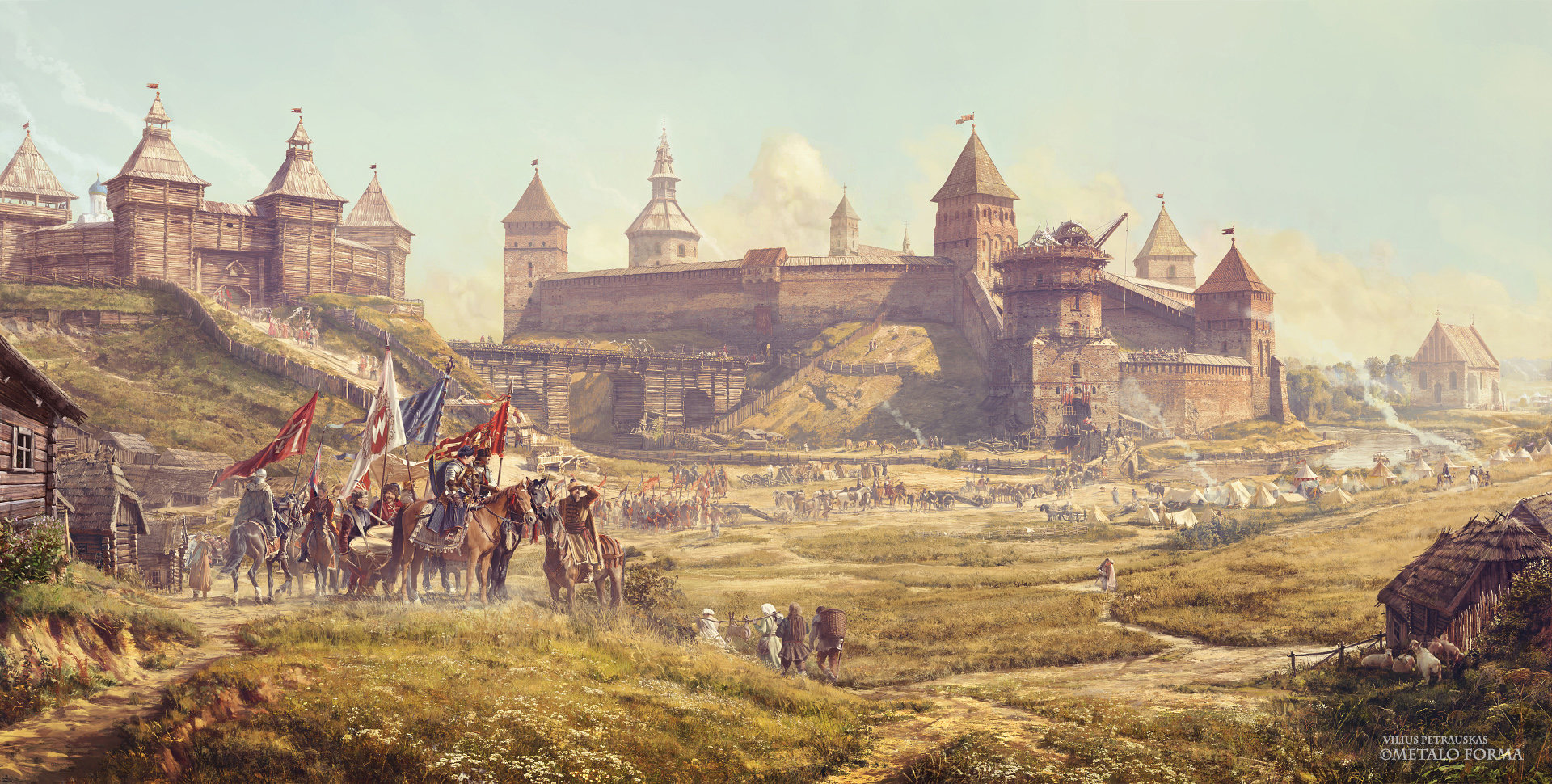
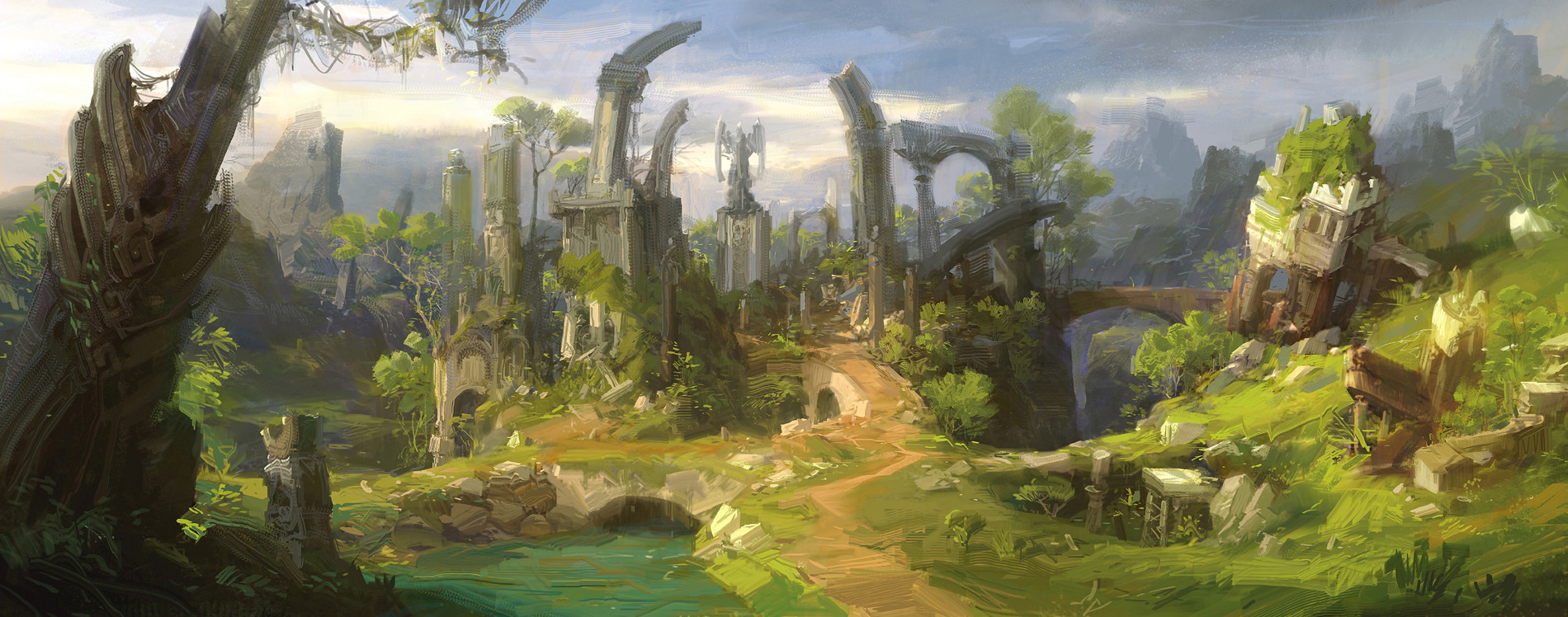
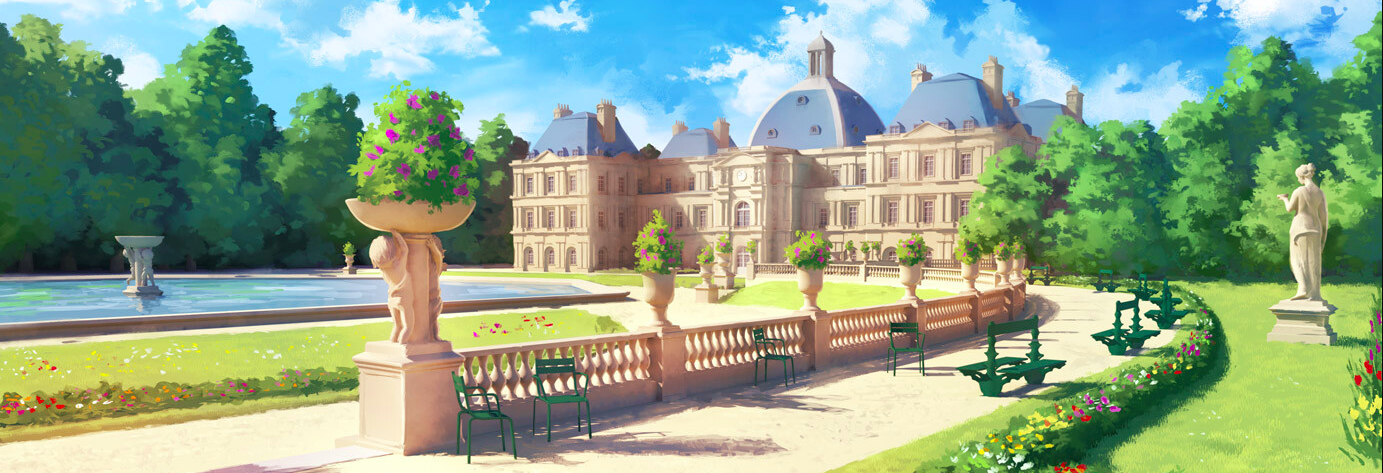
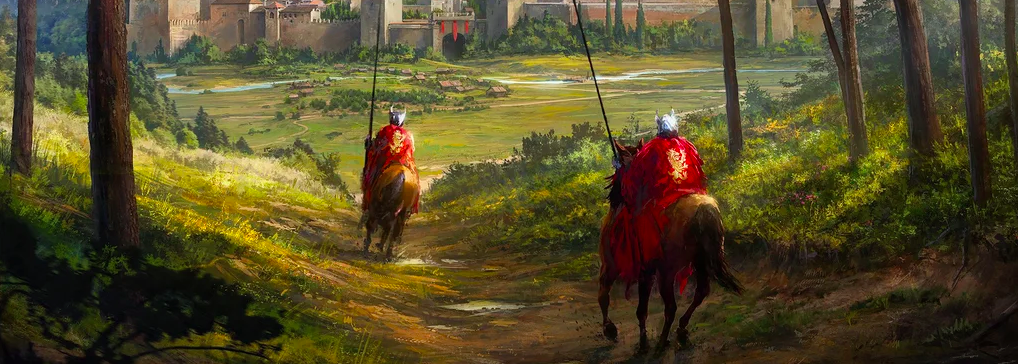
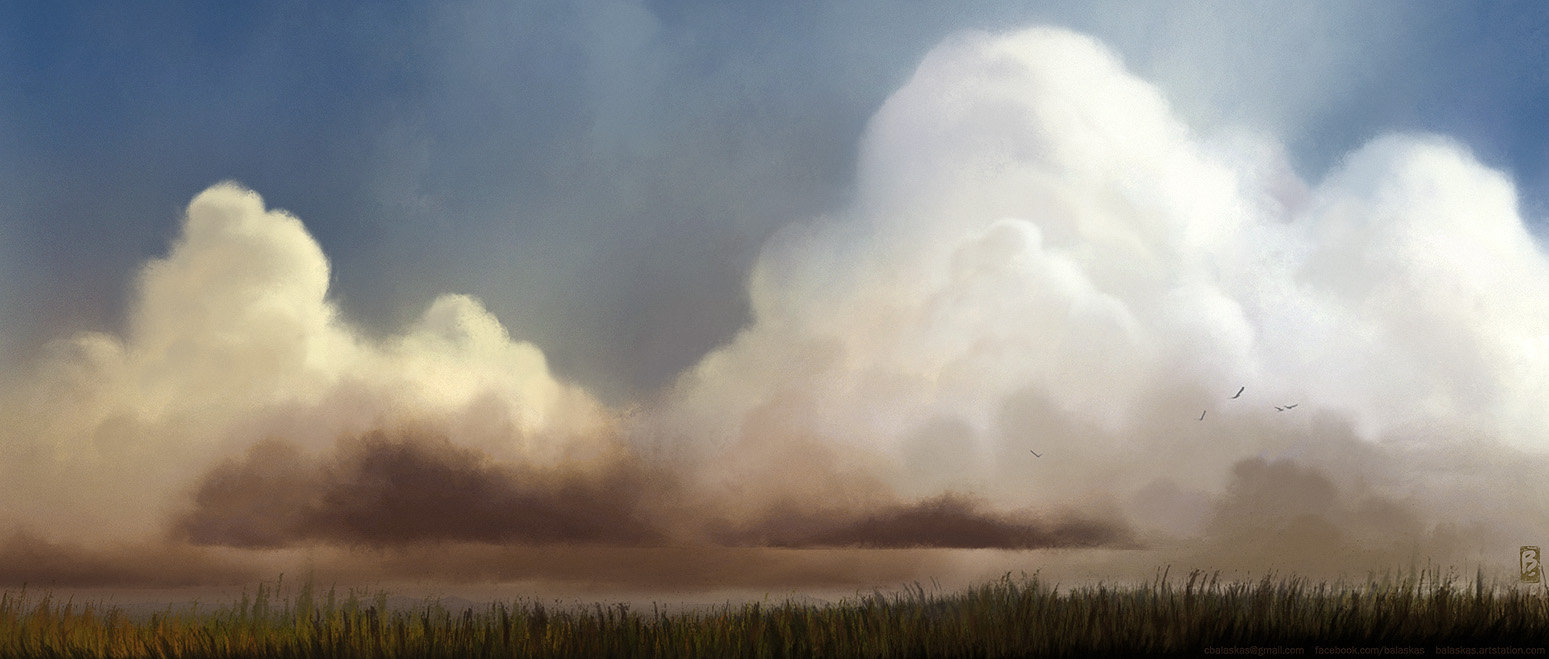
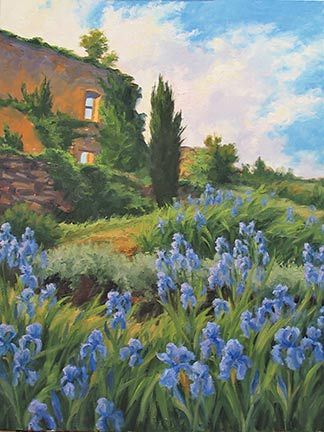

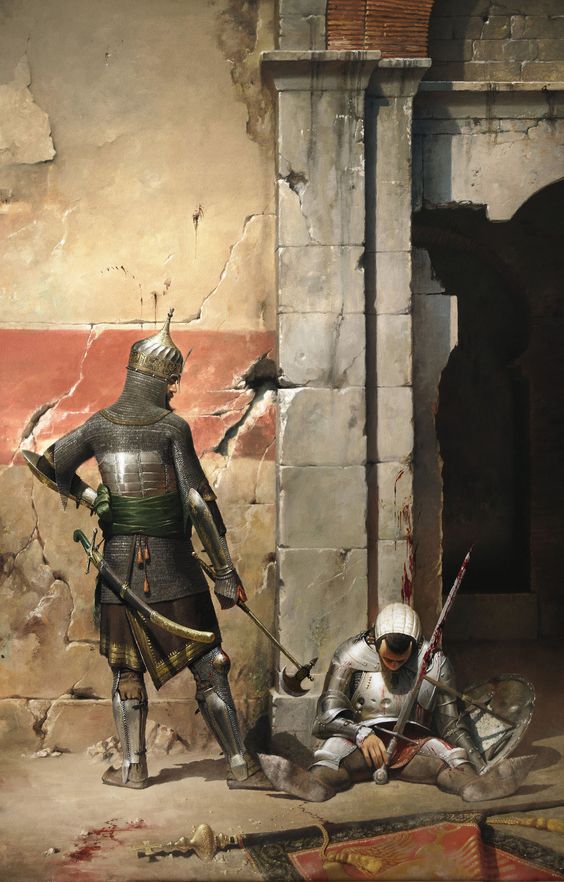
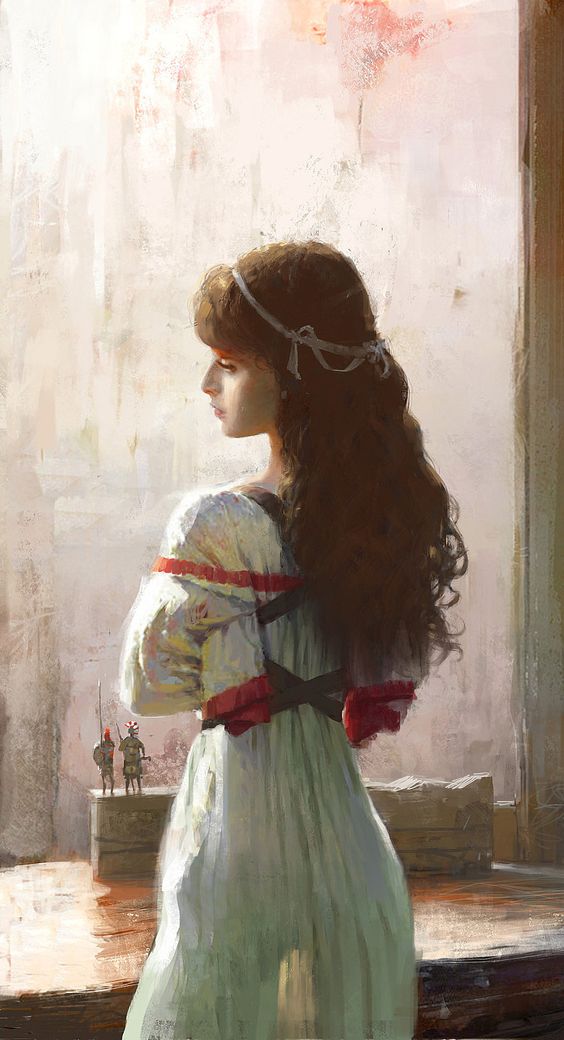
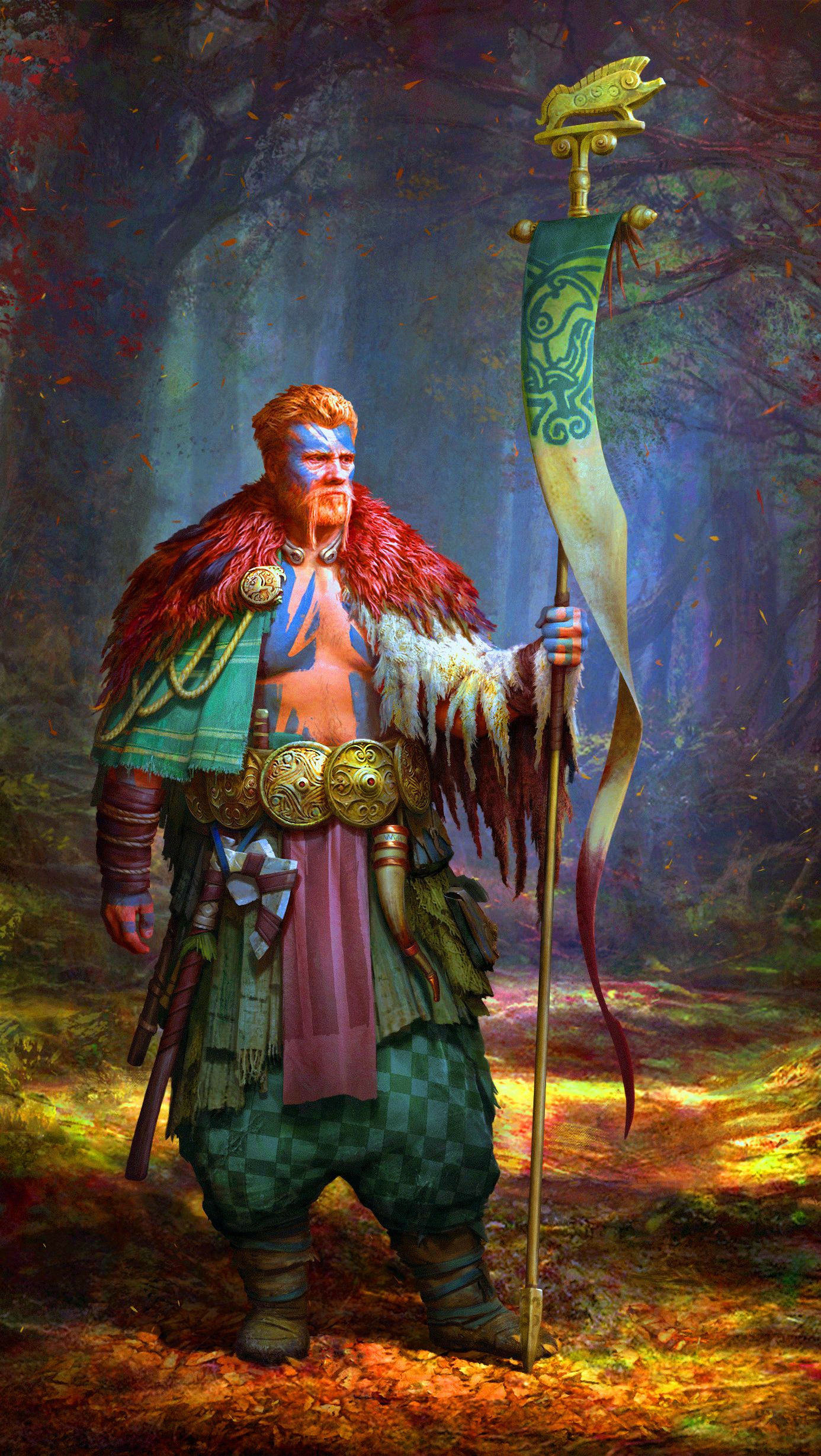
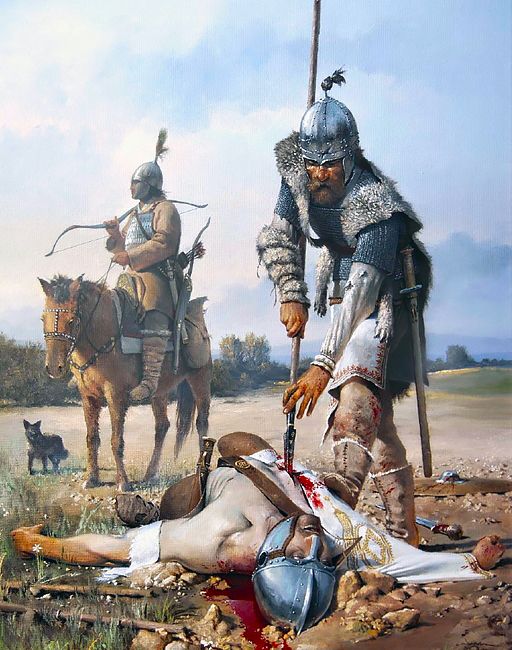
Comments